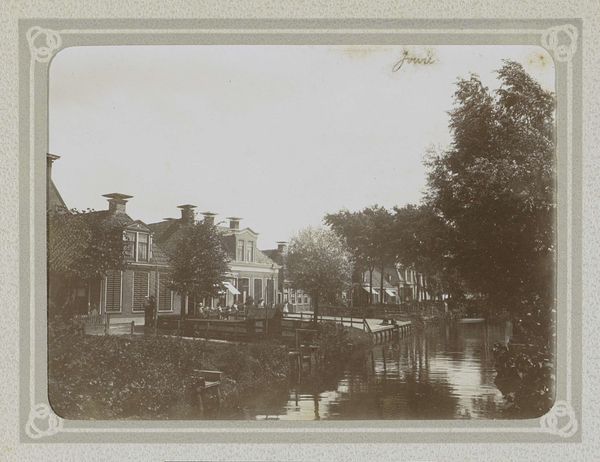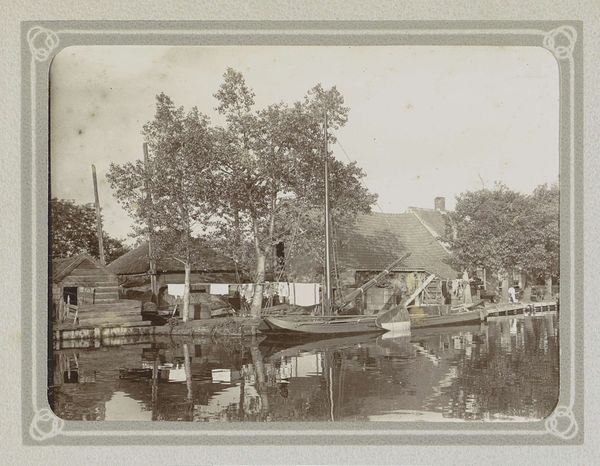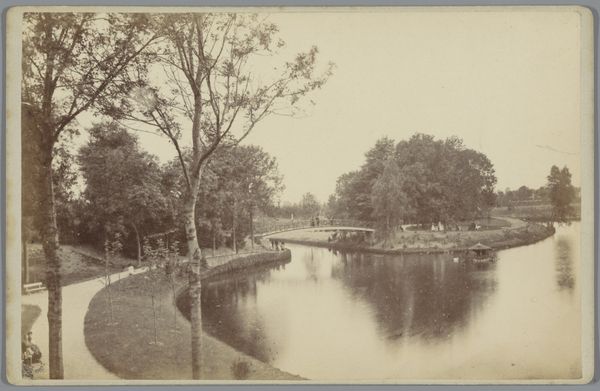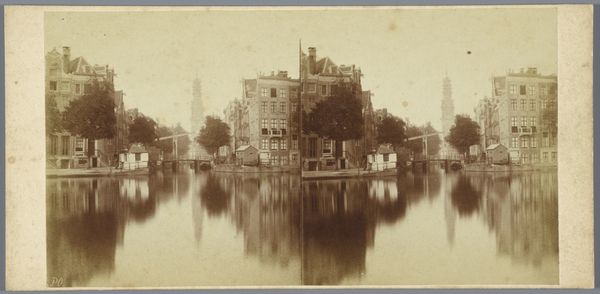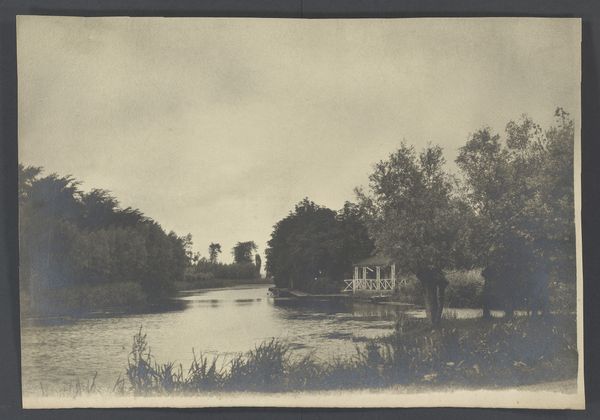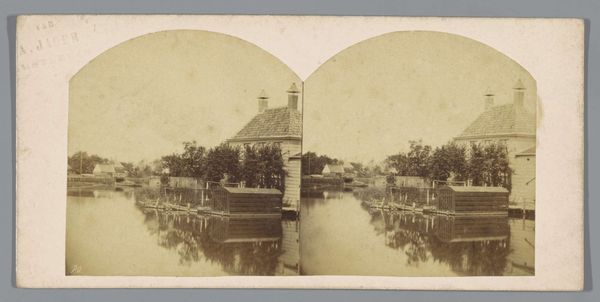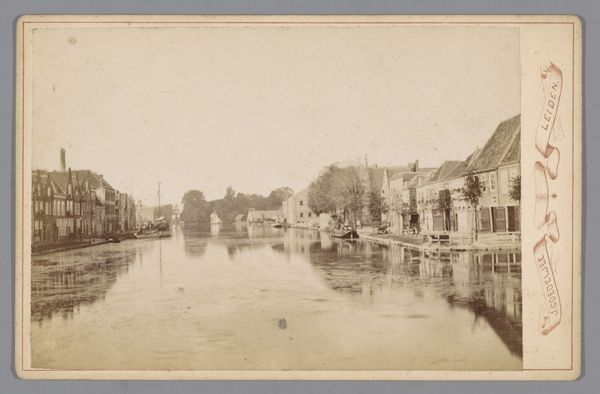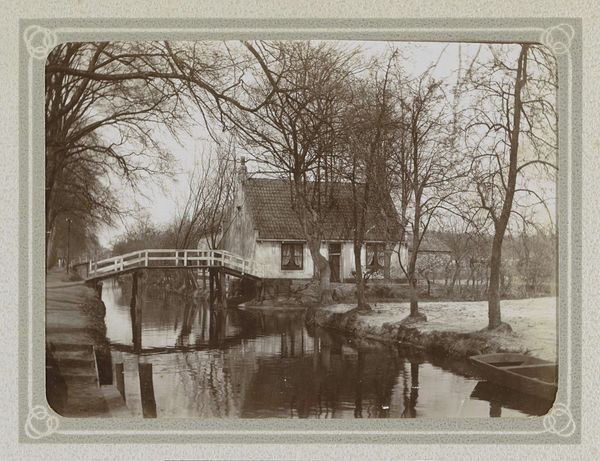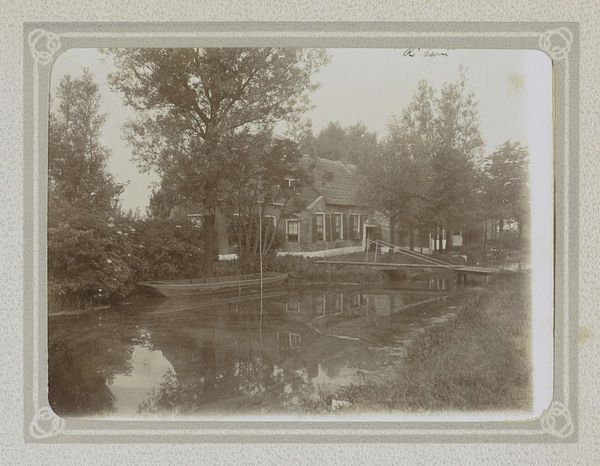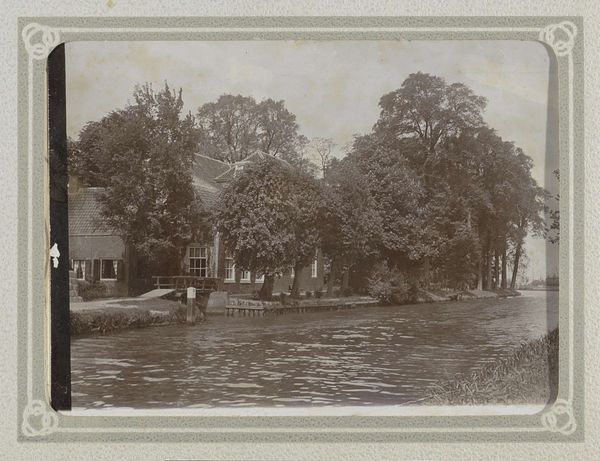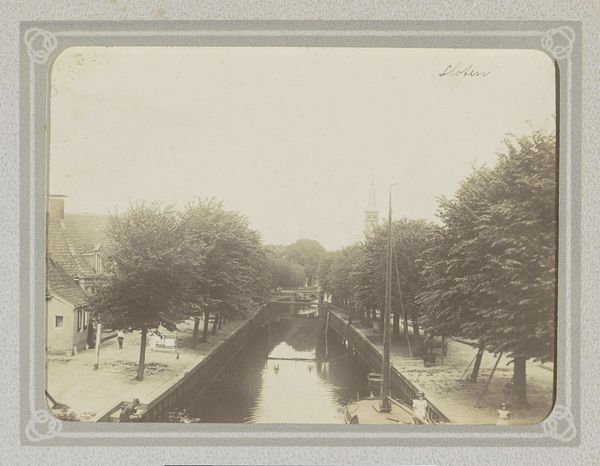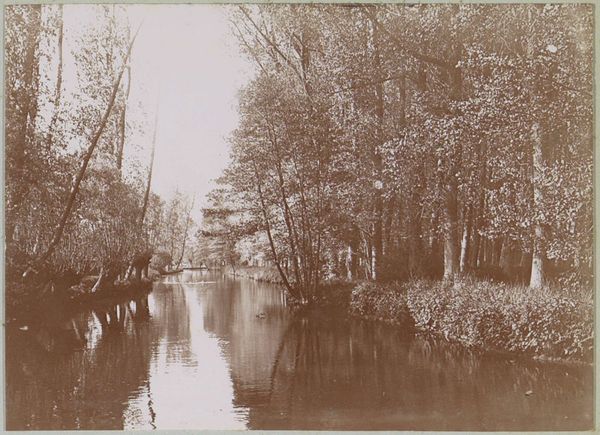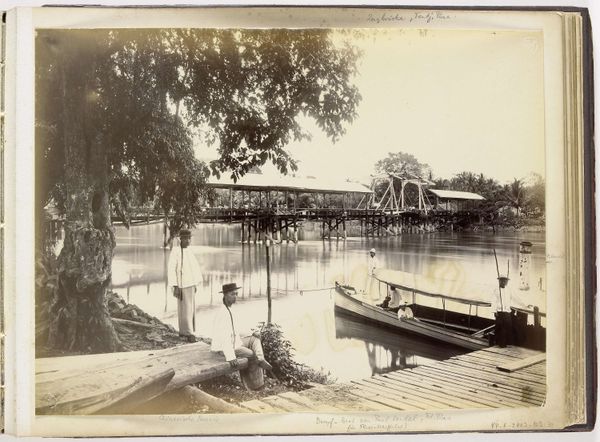
plein-air, photography
#
plein-air
#
landscape
#
photography
#
cityscape
#
realism
Dimensions: height 81 mm, width 110 mm
Copyright: Rijks Museum: Open Domain
Editor: This photograph, taken by Folkert Idzes de Jong around 1905-1907, captures villas along Vijverlaan in Park Honingen, Rotterdam. The reflections in the water give it a tranquil, almost melancholic feel. How do you interpret this work? Curator: I see this photograph as a fascinating intersection of urban development and social history. On one level, it is an aesthetic landscape; on another, it offers insights into the spatial and social stratification of early 20th-century Rotterdam. Consider who had access to this "park life" versus who was excluded, particularly in a rapidly industrializing city. What narratives does this image subtly obscure, even as it makes a seemingly straightforward depiction of bourgeois domesticity? Editor: So, beyond just seeing pretty houses, we should consider who lived there and, importantly, who couldn't? Curator: Precisely. "Realism," as a style, claims objectivity, but whose reality is being presented here? The artist is choosing to show us this angle, this scene. Are there factories nearby? Working-class neighborhoods? The exclusion of those narratives reinforces a certain social order. We need to ask: how does landscape photography participate in the construction and maintenance of power structures? Editor: That’s a perspective I hadn't considered. I was just seeing the beauty of the reflections. Curator: And there *is* beauty there. But even beauty can serve a purpose, can’t it? It can naturalize inequalities, making them seem inevitable, even desirable. Consider the political implications of a carefully curated vision of urban life like this. The embrace of photography by realists has been seen as a movement toward objectivity, but that simply isn't possible in a world laden with bias. It shows that it’s critical to see beyond the surface to uncover hidden social dynamics. Editor: I will definitely look at landscape photography differently now. Curator: It challenges us to see art not just as a representation of reality, but also as a site of social and political meaning-making.
Comments
No comments
Be the first to comment and join the conversation on the ultimate creative platform.
